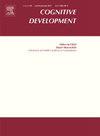合作与竞争对儿童资源配置的影响:个体与群体互动的差异
IF 1.8
3区 心理学
Q3 PSYCHOLOGY, DEVELOPMENTAL
引用次数: 0
摘要
以往关于合作和竞争环境下儿童资源分配的研究主要集中在个体间互动(两个个体之间的互动)或群体间互动(两个群体之间的互动),很少有研究采用比较框架同时评估社会环境(合作/竞争)和互动类型(个体间/群体间)的分配模式。具体来说,在与个人或群体互动时,合作与竞争如何影响儿童的分配决策,我们知之甚少。为了解决这个问题,601名3-5岁和6-8岁的儿童被要求在合作、竞争或中立(控制)环境下在自己和伴侣之间(个体间条件)或在他们的群体和另一个群体之间(群体间条件)分配资源。此外,一个强迫选择游戏任务(包括分享、亲社会和嫉妒试验)被用来探索儿童的行为差异是由亲社会、平等主义还是利己主义动机引起的。结果表明,在竞争环境中,两个年龄组的孩子都将更多的资源分配给了自己的一方。值得注意的是,3- 5岁的孩子将更多的资源分配给自己,而6- 8岁的孩子则表现出相反的模式,他们将更多的资源分配给团队,而不是自己。此外,在强迫选择任务中,6 ~ 8岁儿童在群体间条件下比在个体间条件下做出更多有利于自己的选择。在合作情境下,6 ~ 8岁儿童在资源分配上表现出平等主义倾向,个体间和群体间的资源分配差异不显著。研究结果表明,在竞争环境中,儿童的资源分配从优先考虑个人利益转向考虑群体内利益,而在合作环境中,无论何种互动类型,儿童在资源分配上都表现出平等主义倾向。这些结果增强了我们对个体间和群体间互动以及合作与竞争如何共同影响发展过程中的资源分配的理解。本文章由计算机程序翻译,如有差异,请以英文原文为准。
The influence of cooperation and competition on children’s resource allocation: Differences between interindividual and intergroup interactions
Previous research on children’s resource allocation in cooperative and competitive contexts has primarily focused on either interindividual interactions (interaction between two individuals) or intergroup interactions (interaction between two groups), with few studies adopting a comparative framework that simultaneously assesses allocation patterns across both social contexts (cooperation/competition) and interaction types (interindividual/intergroup). Specifically, little is known about how cooperation versus competition differentially shapes children’s allocation decisions when interacting with individuals versus groups. To address this issue, 601 children aged 3–5 and 6–8 years were asked to allocate resources either between themselves and a partner (interindividual condition) or between their group and another group (intergroup condition) under cooperative, competitive, or neutral (control) contexts. Additionally, a forced-choice game task (including sharing, prosocial, and envy trials) was used to explore whether children’s behavioral differences were due to prosocial, egalitarian, or egoistic motivations. Results showed that in competitive contexts, children in both age groups allocated more resources to their own side. Notably, 3- to 5-year-olds allocated more resources to themselves than to their group, whereas 6- to 8-year-olds showed the opposite pattern, allocating more to their group than to themselves. Moreover, in the forced-choice task, 6- to 8-year-olds made more choices that benefited their own side in the intergroup condition than in the interindividual condition. In the cooperative context, 6- to 8-year-olds demonstrated an egalitarian tendency in resource allocation, with no significant differences between the interindividual and intergroup conditions. These findings suggest that in competitive contexts, children’s resource allocation shifts from prioritizing personal interests to considering ingroup interests, whereas in cooperative contexts, children show an egalitarian tendency in resource allocation regardless of interaction type. These results enhance our understanding of how interindividual and intergroup interactions, along with cooperation versus competition, jointly influence resource allocation during development.
求助全文
通过发布文献求助,成功后即可免费获取论文全文。
去求助
来源期刊

Cognitive Development
Multiple-
CiteScore
3.20
自引率
5.60%
发文量
114
期刊介绍:
Cognitive Development contains the very best empirical and theoretical work on the development of perception, memory, language, concepts, thinking, problem solving, metacognition, and social cognition. Criteria for acceptance of articles will be: significance of the work to issues of current interest, substance of the argument, and clarity of expression. For purposes of publication in Cognitive Development, moral and social development will be considered part of cognitive development when they are related to the development of knowledge or thought processes.
 求助内容:
求助内容: 应助结果提醒方式:
应助结果提醒方式:


